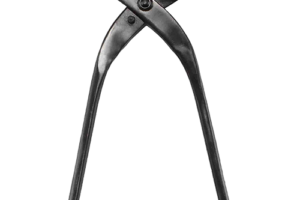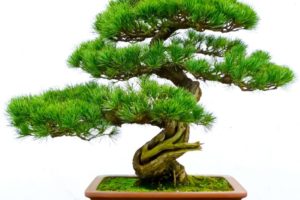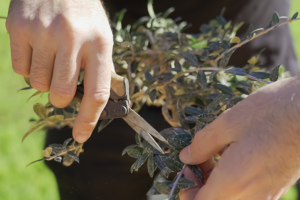Hop-hornbeam ( Ostrya virginiana ) Bonsai tree
Hophornbeam (Ostrya virginiana)
Hophornbeam Bonsai (Ostrya virginiana) is a species of deciduous tree native to North America that is often grown as a bonsai. Known for its delicate, airy foliage, this bonsai is an excellent choice for beginners who are looking for a low-maintenance plant to cultivate. In this blog post, we’ll take a look at the characteristics of Hophornbeam Bonsai, how to care for it, and how to style it to create a beautiful and unique work of art.

Characteristics of Hophornbeam Bonsai
Hophornbeam Bonsai is a slow-growing tree that can reach a height of up to 50 feet in its natural habitat. As a bonsai, it is typically much smaller, with a height ranging from 6 inches to 3 feet. The trunk of the Hophornbeam is thin and straight, and its bark is a gray-brown color that becomes furrowed with age.
The leaves of the Hophornbeam are oval-shaped and about 1-2 inches long. They are a bright green color in the spring and summer and turn yellow in the fall. The tree produces tiny, inconspicuous flowers in the spring, followed by drooping clusters of nut-like seeds in the summer.
Caring for Hophornbeam Bonsai
One of the key advantages of growing Hophornbeam Bonsai is that it is low-maintenance and easy to care for. Here are some tips for keeping your Hophornbeam bonsai healthy and beautiful.
Lighting: Hophornbeam Bonsai needs bright, indirect light to grow and thrive. Place your bonsai in a location with good light, but avoid direct sunlight, which can scorch the leaves.
Watering: Hophornbeam Bonsai needs to be watered regularly to keep the soil moist but not waterlogged. Water the tree deeply, but allow the soil to dry slightly between waterings.
Soil: Hophornbeam Bonsai needs well-draining soil that is rich in organic matter. Use a high-quality bonsai soil mix or make your own by mixing equal parts of sand, peat moss, and perlite.
Fertilizing: Hophornbeam Bonsai needs to be fertilized regularly to promote healthy growth. Use a balanced fertilizer every 2-4 weeks during the growing season, and reduce fertilizing during the winter.
Pruning: Regular pruning is essential for maintaining the shape and size of Hophornbeam Bonsai. Prune back the branches to control the size and shape of the tree, and to encourage the growth of new shoots.
Styling Hophornbeam Bonsai
Styling Hophornbeam Bonsai is an enjoyable and rewarding experience that allows you to create a unique and beautiful work of art. There are many different styles of bonsai, but here are a few popular styles that are well-suited to the Hophornbeam.
Informal Upright Style: This style features a straight, tapering trunk that grows vertically, with branches arranged in a balanced, harmonious design. The tips of the branches point upwards, giving the tree an airy, delicate appearance.
Slanting Style: This style features a trunk that slants to one side, creating a dramatic, asymmetrical look. The branches are arranged to balance the slanting trunk, with the tips of the branches pointing upwards.
Literati Style: This style features a twisting, contorted trunk that resembles a calligraphy brush , with branches arranged in an irregular, asymmetrical pattern. This style is particularly well-suited to Hophornbeam Bonsai because of its naturally twisting trunk and delicate foliage.
Cascade Style: This style features a trunk that cascades downward, resembling a waterfall. The branches are arranged to balance the downward-growing trunk, and the tips of the branches hang downwards. This style is a dramatic choice for Hophornbeam Bonsai, and is especially effective when displayed in a tall container.
Conclusion
Hophornbeam Bonsai (Ostrya virginiana) is a beautiful and low-maintenance tree that is well-suited to bonsai cultivation. With its delicate foliage and airy appearance, it is a great addition to any bonsai collection. However, it does require some special care and attention, such as proper pruning, watering, and fertilization. By following these guidelines, you can ensure that your Hophornbeam Bonsai will thrive and continue to be a source of beauty and enjoyment for years to come.







Leave a Reply
Your email is safe with us.
You must be logged in to post a comment.